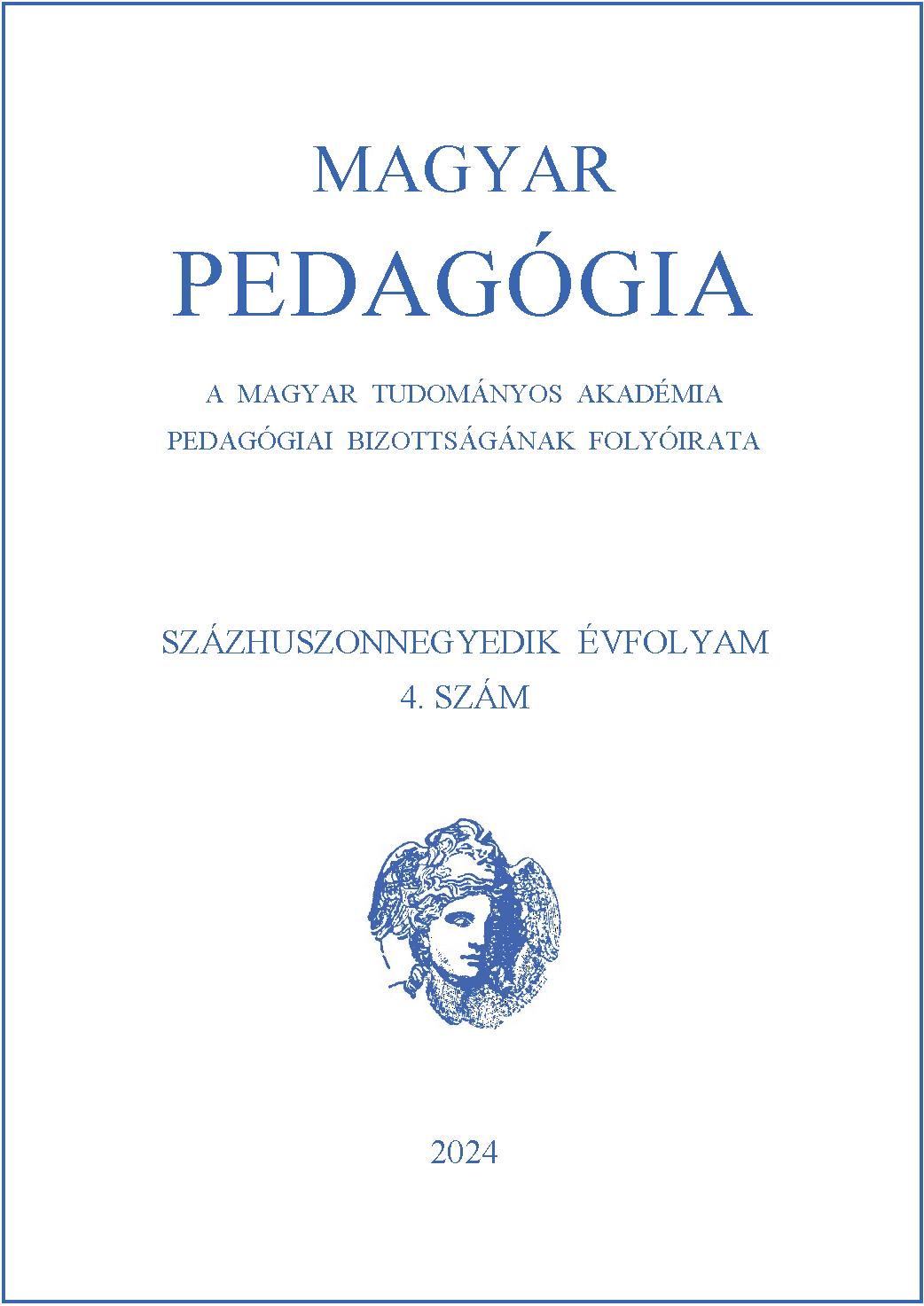Satisfaction survey of international students on the compulsory learning of Hungarian as a foreign language (MID) at MATE
Main Article Content
Abstract
The present study summarises the opinions of non-Hungarian native speaker scholarship students studying at MATE about learning Hungarian as a foreign language (MID). Hungarian as the language of the host culture plays an important role in their integration and in the process of their education. In our survey, we investigated the conditions of the compulsory MID lessons based on the responses of the students of the first two years. The results of the questionnaire survey show significant differences in the perception of the course by country of origin and in the assessment of the categories clustered by Cronbach's Alpha (Lessons, Course Material, Instructor, Accountability and Professionalism) in terms of disciplines, gender, and majors. The experience of teaching the new subject and the student feedback, on the one hand, point to the difficulties of managing multicultural groups, and on the other hand, they provide confirmation with positive statements, as evidenced by the expression of professional and human appreciation for MID teachers.
Downloads
Article Details
References
Akanwa, E. (2015). International Students in Western Developed Countries: History, Challenges, and Prospects. Journal of International Students, 5, 271–284. https://doi.org/10.32674/jis.v5i3.421
Arkoudis, S., Watty, K., Baik, C., Yu, X., Borland, H., Chang, S., Lang, I., Lang, J., & Pearce, A. (2013). Finding common ground: Enhancing interaction between domestic and international students in higher education. Teaching in Higher Education, 18(3), 222–235. https://doi.org/10.1080/13562517.2012.719156
Bándli, J. (2021). „Ritkaságok tanítása” – A magyar mint idegen nyelv a hazai bölcsészképzésben. In J. Bándli, A. Pap, & Z. Zajacz (Szerk.), MID-KÖRKÉP Magyar mint idegen nyelv Oktatási helyzetek, módszertani tudnivalók (o. 53–76). ELTE Eötvös Kiadó.
Bennett, J. M. (2018). Development model of intercultural sensitivity. In International encyclopedia of intercultural communication (o. 2160). Wiley-Blackwell.
Borsos, L., Kruzslicz, T., & Oszkó, B. (2021). A KOLLABORATÍV ONLINE NYELVTANULÁS LEHETőSÉGEI ÉS TANULSÁGAI KÉT MAGyAR MINT IDEGEN NYELVI PROJEKT ALAPJÁN. Hungarológiai Közlemények, 21(4), 90–108. https://doi.org/10.19090/hk.2020.4.90-108
Debreczeni, C. (2019, május 6). Nekem ez kínai! A magyar nyelv tanítása kínaiaknak. pont HU. https://ponthu.blog.hu/2019/05/06/nekem_ez_kinai_a_magyar_nyelv_tanitasa_kinaiaknak
Dóla, M. (2021). Módszertani útmutató a magyar nyelv tanításához. Károli Gáspár Református Egyetem : L’Harmattan Kiadó.
Dylman, A. S., Champoux-Larsson, M.-F., & Zakrisson, I. (2020). Culture, Language and Emotion. Online Readings in Psychology and Culture, 4(2). https://doi.org/10.9707/2307-0919.1167
Etherington, S. J. (2014). But science is international! Finding time and space to encourage intercultural learning in a content-driven physiology unit. Advances in Physiology Education, 38(2), 145–154. https://doi.org/10.1152/advan.00133.2013
Garamvölgyi, J. (2022). Examining the Relationship between Cultural Intelligence and Management Competencies in a Multicultural Context [PhD, Hungarian University of Agriculture and Life Sciences]. https://uni-mate.hu/documents/20123/336900/Garamvolgyi_Judit_ertekezes+%281%29.pdf/5a297e40-e05e-7552-c97d-56f3a363104d?t=1651481690289
Halász, R., & Rébék-Nagy, G. (2019). Az orvostanhallgatói magyar szaknyelv oktatásáról. PORTA LINGUA – 2019 Interdiszciplináris megközelítések a szaknyelvoktatásban és -kutatásban, 175–186.
Hidasi, J. (2008). Interkulturális kommunikáció (2. kiad). Scolar.
M. Császár, Z., & Alpek, L. (2018). A nemzetközi hallgatók vidéki egyetemvárosokra gyakorolt gazdasági szerepe Magyarországon Pécs példáján. 11.
Manikutty, S., Anuradha, N. S., & Hansen, K. (2007). Does culture influence learning styles in higher education? International Journal of Learning and Change, 2(1), 70. https://doi.org/10.1504/IJLC.2007.014896
Maróti, O. (2021). Ismeretlen, de nem idegen nyelv – A származásnyelvi tudásszerkezetről és oktatási helyzetről. In J. Bándli, A. Pap, & Z. Zajacz (Szerk.), MID-KÖRKÉP Magyar mint idegen nyelv Oktatási helyzetek, módszertani tudnivalók (o. 129–150). ELTE Eötvös Kiadó.
Marthy, A. (2021). A magyar mint idegen nyelv oktatása az orvosképzésben. In J. Bándli, A. Pap, & Z. Zajacz (Szerk.), MID-KÖRKÉP Magyar mint idegen nyelv Oktatási helyzetek, módszertani tudnivalók (o. 113–127). ELTE Eötvös Kiadó.
Pap, A. (2021). A magyar nyelv jelenléte a külföldi oktatóhelyeken régen és ma – különös tekintettel Olaszországra. In J. Bándli, A. Pap, & Z. Zajacz (Szerk.), MID-KÖRKÉP Magyar mint idegen nyelv Oktatási helyzetek, módszertani tudnivalók (o. 77–112). ELTE Eötvös Kiadó.
Rienties, B., & Tempelaar, D. (2013). The role of cultural dimensions of international and Dutch students on academic and social integration and academic performance in the Netherlands. International Journal of Intercultural Relations, 37(2), 188–201. https://doi.org/10.1016/j.ijintrel.2012.11.004
Roszik-Volovik, X., & Nguyen Luu, L. A. (2020). Nemzetközi hallgatók vizsgálata: A felsőoktatásban való boldogulás és az elégedettség komplexitása. Alkalmazott Pszichológia, köt. 20. issue 4. ISSN 1419872X. https://doi.org/10.17627/ALKPSZICH.2020.4.139
Rózsavölgyi, E. (2017). A magyar és az olasz téri nyelv grammatikája a magyar mint idegen nyelv szemszögéből. Lingua Franca Csoport. https://mek.oszk.hu/17500/17559/17559.pdf
Rudnák, I., Alshaabani, A., & Wu, J. (2022). The Relationship between Perceived Organizational Support and the Intentions of International Students in Hungary to Stay in Hungary: The Role of Conflict Climate and Intercultural Adjustment. Sustainability, 14(21), 14025. https://doi.org/10.3390/su142114025
Rudnák, I., & Garamvölgyi, J. (2017). Cultural Intelligence: Key influences. SOCIAL SPACE = PRZESTRZEN SPOLECZNA, 13, 1–19.
Rudnák, I., Nagy, K., & Nagyházi, B. (2022). A magyar mint idegen nyelv és kultúra kötelező tantárgy bevezetése a nemzetközi hallgatók számára: Tapasztalatok a Magyar Agrár- és Élettudományi Egyetemen. In V. Fehér, L. Kalmár, & J. Raffai (Szerk.), Paradigmaváltás az oktatásban és a tudományban nemzetközi konferencia 2022-11-03 [Szabadka, Szerbia] (o. 153–167). Újvidéki Egyetem Magyar Tannyelvű Tanítóképző Kar. https://magister.uns.ac.rs/files/kiadvanyok/konf2022/Inter_ConfSubotica2022.pdf
Ryan, J., & Hellmundt, S. (2005). Maximising international students’ „cultural capital”. In Teaching international students: Improving learning for all (o. 13–16).
SHP. (2019). A Stipendium Hungaricum ösztöndíjasok számára nyújtandó magyar mint idegen nyelv és kultúra kurzus—A kurzus javasolt kimeneti követelményei. Stipendium Hungaricum. https://tka.hu/docs/palyazatok/mid_kurzus_kimeneti_kovetelmenyek_0302.pdf
SHP. (2021). A Stipendium Hungaricum Program Működési Szabályzata. Stipendium Hungaricum. https://stipendiumhungaricum.hu/uploads/2020/03/SH_MSZ_210730_honlap.pdf
SHP. (2022). A Stipendium Hungaricum Program intézményi megvalósítását segítő Végrehajtási útmutató. Stipendium Hungaricum. https://stipendiumhungaricum.hu/uploads/2020/03/2022_07_05_SH_VHU.pdf
Szili, K. (2006). Vezérkönyv a magyar grammatika tanításához: A magyart idegen nyelvként oktató tanároknak. Enciklopédia.
Vickers, P., & Bekhradnia, B. (2007). The economic costs and benefits of international students. (32; o. 24). Higher Education Policy Institute. https://www.hepi.ac.uk/2007/07/12/the-economic-costs-and-benefits-of-international-students/
Wu, J., & Rudnák, I. (2021). Exploring the Impact of Studying abroad in Hungary on Entrepreneurial Intention among International Students. Sustainability, 13(17), 9545. https://doi.org/10.3390/su13179545
Yates, L., & Wahid, R. (2013). Challenges to Brand Australia: International students and the problem with speaking. Higher Education Research & Development, 32(6), 1037–1050. https://doi.org/10.1080/07294360.2013.806447
Zajacz, Z. (2021). A magyar mint idegen nyelv oktatásáról a digitális térben – Pillanatfelvétel. In J. Bándli, A. Pap, & Z. Zajacz (Szerk.), MID-KÖRKÉP Magyar mint idegen nyelv Oktatási helyzetek, módszertani tudnivalók (o. 151–183). ELTE Eötvös Kiadó.

